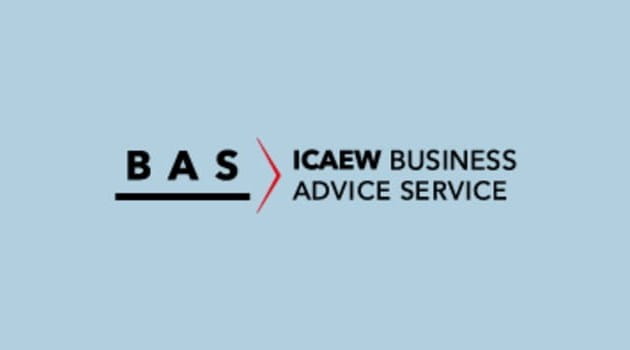As the last warm summer breeze disappears, thoughts are turning to the impending autumn and winter months and the impact of ramping up energy usage once again.
Switching energy suppliers became almost impossible over the past 18 months as energy prices rocketed. Today, options for switching are coming back on track, although the key to long-term energy cost savings is to cut energy consumption.
Fortunately, help is at hand after the Department of Energy Security and Net Zero launched a campaign to help small and medium-sized businesses reduce bills and improve energy efficiency.
Heating and hot water systems, essential for every business, can account for up to 40% of total energy costs, so this should be one of the first areas of focus. Only by calculating what your current emissions are and where they are coming from will business owners understand their baseline and be able to compare it to average usage levels in the UK and then work to lower usage.
The government campaign offers guidance on how companies can make savings while cutting emissions – from installing light and heating timers to turning down boiler flow temperature and switching to more energy-efficient light bulbs.
Small steps can make a big difference
And yet, many businesses continue to miss out on huge potential savings, due to a lack of information on how to reduce their energy costs. For many companies, a 20% cut in energy costs represents the same bottom-line benefit as a 5% increase in sales, according to government calculations.
The government highlights how small steps can deliver substantial savings through examples of working with SMEs across the UK. Marlec Engineering, a wind turbine manufacturer in Corby, switched to energy-saving lighting as part of a range of measures to make its business premises more energy efficient.
The company replaced T8 fluorescent lamps with new energy-saving LED tubes. The lighting did not reduce light levels in the office and achieved a 60% saving on lighting costs.
Among smaller businesses, factors such as climate change are still not rated as highly as other risks, despite them being a contributing factor to much of the risk landscape. What might trigger accelerated environmental, social and governance (ESG) action among SMEs, however, is a potential tripling of insurance premiums.
ESG risks will have an increasing impact on SMEs’ insurance policies. It will undoubtedly lead to more costly insurance or, at worse, insurers might not want to offer a policy to those who ignore ESG issues.
Insurers are also having to grapple with the complexities of ESG risks in their own businesses, so they are aware of what’s involved. Traditional underwriting approaches are no longer adequate to identify and manage the complex risks of climate change and other ESG factors, leading to insurers changing their approach to determining insurance policies.
“The two main elements in respect of insurance companies are uninsurable risks and stranded assets,” says Neil Campbell, FCA, expert in financial services. “The two biggest insurance providers in the US are no longer offering fire insurance for properties in certain areas because the risk is just uninsurable.”
Campbell says stranded assets are particularly tricky because insurance companies are probably ahead of the companies when it comes to ESG assessments. They might consider an asset to be riskier than the company has accounted for. “Your premiums are going up. It might not be the premiums this year or next year, but in five years. That might become a big problem and those assets might not be insurable at all,” he says.
Indeed, insurers around the world are considering whether they should provide coverage to coal plants, oil pipelines and other carbon-intensive businesses.
“Having clear ESG-related targets, measurable metrics and a purpose and timeline for future performance is critical, but there is also a lot of insurer focus on the transition risk as organisations move towards a carbon-neutral future. Being able to show a plan for improvement will help facilitate continued partnership with carriers and, as with cyber risk, it’s important to build time to consider ESG into renewal schedules,” AON’s Market Insights shows.
Property underwriters are focused on reducing their exposure to the physical impacts of climate change, such as coastal properties threatened by hurricanes and flooding, and adjusting their pricing in line with these risks, says CapGemini.
Critically, liability underwriters are also carefully watching the increasing number of ESG-related lawsuits and are trying to gain insights into what sectors might face such litigations in the future.
According to recent research from Capgemini, relatively few insurers have begun factoring sustainability into their underwriting practices. Fewer than half of P&C insurers embed ESG scores in the underwriting process. Less than a third (30%) offer preferential conditions for customers that adopt sustainability initiatives and even fewer (27%) restrict access to ‘brown’ or unsustainable companies.
But while it’s unlikely that ESG is having a major impact on SMEs’ insurance policies, it’s expected that insurance premiums will rise across the board over the next five years.
Campbell says: “Companies have to be looking at the right levels of data in light of these risks and they have to be joined up. One of the criticisms of the application of TCFD (Task Force on Climate-related Financial Disclosures) was that governance and strategy were fine, and risk management and metrics were fine, but they weren’t joined up.”
What are the upsides?
The positive news for early adopters of ESG assessments is that they could see some benefits; not so much in a reduction of insurance premiums, but rather fewer rises.
If it isn’t happening already in some quarters, insurers will soon integrate AI-enabled tools and machine learning into their underwriting workflows to enable dynamic pricing.
Once insurers can incorporate richer data from more varied sources, underwriters can more effectively and accurately evaluate and price policies. In time, this approach will allow insurers to price each business more dynamically.
Accountants are well-placed and trusted to work with SME clients to begin the ESG assessment process if business owners haven’t already. Their analytics skills can provide insights that owners may have overlooked. This in turn will help business owners future-proof their companies against escalating insurance premiums.
Insurers are also having to adapt to this changing landscape and are increasingly prepared to collaborate with companies to help them highlight their ESG credentials. It’s worth talking to your insurance provider to engage them in your climate change risk analysis. The critical point for business owners is to take that first step on their ESG journey rather than ignoring the challenge ahead.
Climate for SMEs
Climate change is affecting businesses of all sizes. ICAEW is aiming to cut through the noise by providing tools and resources for small to medium sized businesses to build resilient business models and get to grips with ESG.

Adrian Dennis, Managing Director of Marlec Engineering, said: “Our business works with an absolute focus on sustainable energy solutions. We’ve invested in electric company cars and eco-friendly packaging. But upgrading to LED lighting is low-cost, and one of the simplest ways to promote sustainability in-house and save money on utility bills. We’d encourage other businesses to upgrade as well.”
The Energy Technology List provides businesses with a list of government-approved energy-efficient products to save your business energy and money. The list, updated monthly, provides details of energy-saving products for businesses and the public sector. The list of over 8,000 products ranges from heating, lighting and buildings insulation to energy-efficient machinery for specific sectors.
Lord Callanan, Minister for Energy Efficiency and Green Finance, says: “These low-to-no-cost changes are easy to make, and our Business Energy Efficiency campaign aims to make sure every small business owner knows how to save energy – and potentially reduce costs.”
Government support can help with bigger changes
There are a host of government support packages for businesses looking to invest in more significant energy-saving projects. Through the government’s Boiler Upgrade Scheme, for example, businesses could get a grant to cover part of the cost of replacing fossil fuel heating systems with a heat pump or biomass boiler. After you’ve checked you’re eligible, you can find out how to apply for the grant.
If you’re a business owner looking to upgrade your energy infrastructure, consider the government’s Recovery Loan Scheme, which supports small and medium-sized businesses to access the finance they need to grow, including investing in energy efficiency projects.
Meanwhile, if you’re looking at long-term investment, then you may be able to get help through business rates exemptions for eligible plant and machinery used in on-site renewable energy generation and storage until 31 March 2035.
This includes rooftop solar panels, wind turbines, and battery storage and onsite storage used with electric vehicle charging points. A 100% relief for eligible low-carbon heat networks that have their own rates bill is also available until 2035.
Another source of help could be found in the Energy Bills Discount Scheme (EBDS) for non-domestic customers, which limits the amount you can be charged per unit of gas or electricity. It will run for 12 months from 1 April 2023 to 31 March 2024.
Advice on the government’s Business Energy Efficiency campaign will be continuously updated with sector-specific guidance, case studies and any new, relevant schemes.
Lord Callanan says: “We’re firmly behind hardworking, local businesses and these simple steps – combined with falling energy costs and support through the EBDS – will help ensure they continue to thrive.”
If energy efficiency is something you’ve put off or if you think you’ve optimised your operations to the maximum it will be worth checking out the government’s latest advice ahead of the winter months.
More support for SMEs on ESG
Energy efficiency for business
The Department for Energy Security and Net Zero has launched a campaign to support business in improving their energy efficiency, including: no-cost and low-cost options, as well as potential longer term investments.




